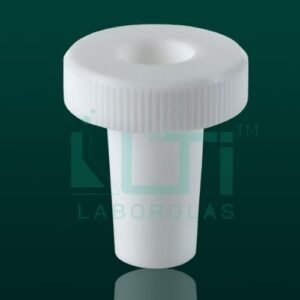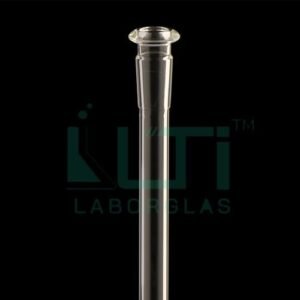Used for demonstrating the decomposition of water, determination of chemical composition by electrolysis and with applications in the evaluation of the electrochemical equivalent of hydrogen.
Description
- Used for demonstrating the decomposition of water, determination of chemical composition by electrolysis and with applications in the evaluation of the electrochemical equivalent of hydrogen.
- The glass unit has two connected limbs, each of approximately 50ml capacity (graduated 2 – 50ml), integral reservoir tube and funnel-shaped bulb, with a stopcock at the top of each limb.
- Supplied with electrodes, 2 carbon and 2 platinum. Requires 12V power supply.
- The apparatus should be set up vertically using a clamp and stand to hold it safely.
- Connect the terminals to a DC power source. Matches will be required to test for gases.
- Chemicals required: Water, molar sodium, or potassium sulphate or sulphuric acid.
- Supplied in neat, well-protected packing case.
Here are some common applications of the Hoffman voltameter:
- Demonstration of Electrolysis:
- Applications: The Hoffman voltameter is commonly used in educational settings to demonstrate the principles of electrolysis. It shows how water can be decomposed into its constituent gases (hydrogen and oxygen) through the passage of an electric current.
- Hydrogen and Oxygen Production:
- Applications: The primary purpose of the Hoffman voltameter is to generate hydrogen and oxygen gases through the electrolysis of water. This process can be used for small-scale production of these gases in laboratory settings.
- Gas Collection Experiments:
- Applications: The voltameter is used for collecting measured volumes of hydrogen and oxygen gases, allowing for quantitative analysis and calculations related to the stoichiometry of the electrolysis reaction.
- Stoichiometry Demonstrations:
- Applications: The Hoffman voltameter is employed to illustrate the stoichiometry of the electrolysis of water. The volume ratios of hydrogen and oxygen gases collected are in a 2:1 ratio, representing the stoichiometric ratio of water.
- Analysis of Gas Laws:
- Applications: The gases produced in the Hoffman voltameter can be used to study gas laws, such as Boyle’s law and Charles’s law, by manipulating the volume and pressure of the collected gases.
- Study of Faraday’s Laws:
- Applications: The Hoffman voltameter can be used to investigate Faraday’s laws of electrolysis, particularly in relation to the quantitative aspects of the electrolysis process.
- Hydrogen Fuel Cell Studies:
- Applications: In educational and research settings focused on hydrogen fuel cells, the Hoffman voltameter provides a simple way to generate hydrogen gas for experiments related to fuel cell technology.
- Alternative Energy Demonstrations:
- Applications: The Hoffman voltameter is sometimes used in educational demonstrations to highlight the potential of using electrolysis to produce hydrogen as a clean and renewable energy source.
- Teaching Redox Reactions:
- Applications: The voltameter is used as a teaching tool for explaining redox reactions involved in the electrolysis of water. It helps students understand the transfer of electrons between the electrodes.
- Basic Electrochemistry Experiments:
- Applications: The Hoffman voltameter serves as an introductory tool for students to conduct basic experiments in electrochemistry, exploring concepts such as oxidation, reduction, and electron transfer.







